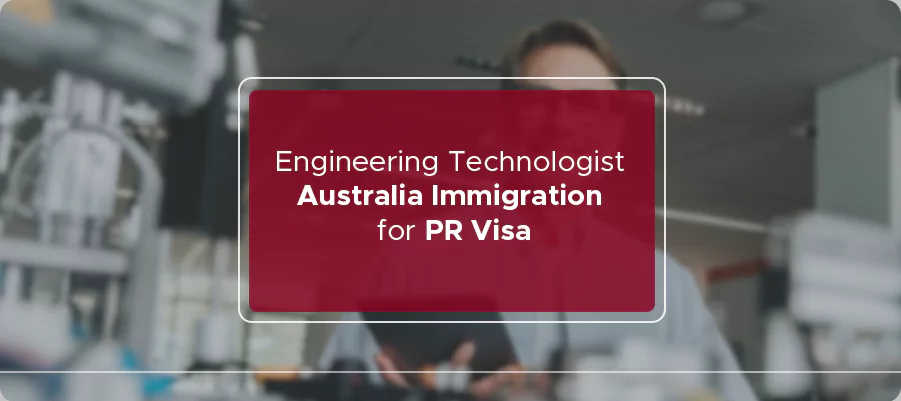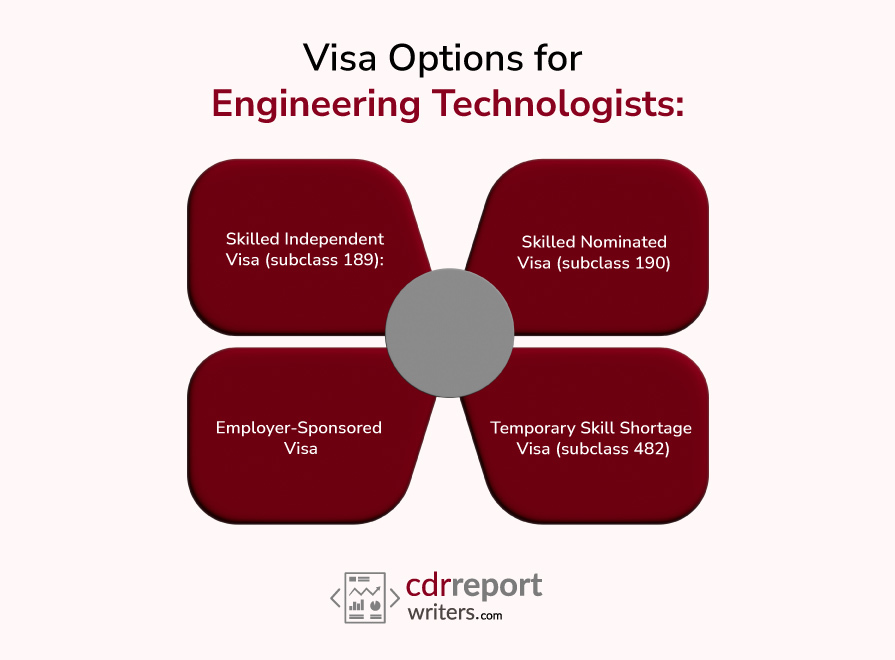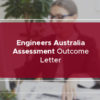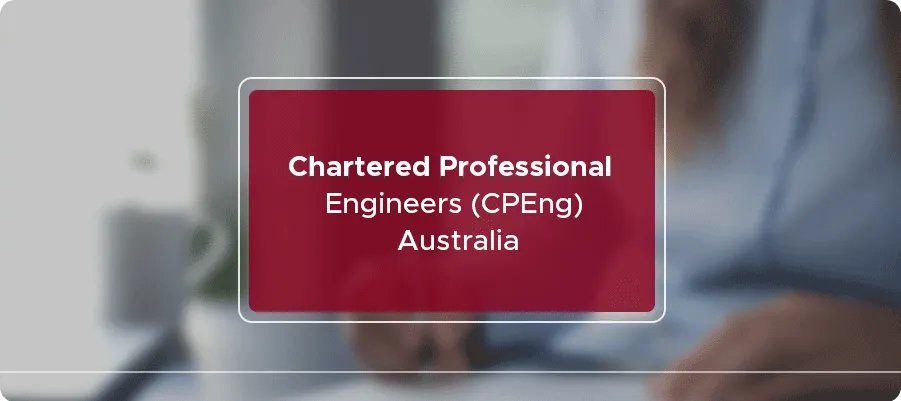
Engineering Technologist Australia Immigration for PR Visa
Australia has always been a famous destination for immigrants, and with its booming economy and high standard of living, it’s easy to see why. One of the most sought-after visas for those looking to immigrate to Australia is the Permanent Residency (PR) visa. There are many pathways to obtaining a PR visa, and one of them is through the Engineering Technologist occupation.
Engineering Technologist ANZSCO – 233914 tests and executes engineering projects by analyzing, modifying, and applying new and current technologies. All occupations in this unit category need a bachelor’s degree or above. Engineering Technologist is part of the 233: Engineering Professionals unit group.
It is necessary to register or obtain a license as an Engineering Technologist. However, for ANZSCO Skill Level 1, other work experience or training in the specified occupation is necessary. Engineers Australia can specialize a candidate with Engineering Technologist in various additional occupations.
Engineering Technologists play a crucial role in the engineering industry, and their skills and expertise get highly valued in Australia. This blog post will explore the process of immigrating to Australia as an Engineering Technologist and the steps involved in obtaining a PR visa.
Who is an Engineering Technologist?
An Engineering Technologist is a professional instructed in practically applying engineering principles and procedures. Engineering Technologists are responsible for designing, developing, testing, and maintaining multiple products, systems, and processes. They work in various industries, including manufacturing, construction, and telecommunications.
The role of an Engineering Technologist requires a high level of technical expertise and problem-solving skills. They are involved in all stages of the engineering process, from conception to implementation, and work closely with engineers and other professionals to ensure that projects get completed successfully.
Why are Engineering technologists in demand in Australia?
Engineering Technologists are in high demand in Australia due to the country’s focus on infrastructure development and innovation. The Australian government has identified the engineering industry as a critical driver of economic growth and is actively seeking to attract skilled professionals in this field.
The demand for Engineering Technologists is robust in civil, mechanical, and electrical engineering areas. The Australian government has also identified several priority areas for development, including renewable energy, transport infrastructure, and telecommunications. These sectors offer excellent opportunities for Engineering Technologists with relevant skills and experience.
Skills Assessment for Engineering Technologists
To get eligible for a PR visa as an Engineering Technologist, you must first undergo a skills assessment by a recognized authority. The skills assessment get designed to assess your qualifications and experience and determine whether they meet the standards required by the Australian government.
Several recognized authorities, including Engineers Australia, the leading professional body for engineers in Australia, conduct the assessment. The assessment process typically involves submitting a detailed application, including evidence of your qualifications, work experience, and professional references.
If your skills assessment is successful, you will receive a positive assessment outcome, which you can use to apply for a PR visa.
Learn More: Pathways for Migration Skills Assessment ✏️✏️
Visa Options for Engineering Technologists
Several visa options are available to Engineering Technologists looking to immigrate to Australia. The most popular options include:

1. Skilled Independent Visa (subclass 189):
This visa is for those skilled workers whose employer or family member does not sponsor them. To be eligible for this visa, you must score at least 65 points on the points test based on age, qualifications, work experience, and English language proficiency.
2. Skilled Nominated Visa (subclass 190):
This visa is for those workers nominated by a state or territory government. To get eligible for this visa, you must get appointed by a state or territory government and meet the minimum requirements for that nomination.
3. Employer-Sponsored Visa
This visa is for skilled workers sponsored by an Australian employer. To get eligible for this visa, you need a job offer from an Australian employer and meet the minimum requirements for that job.
4. Temporary Skill Shortage Visa (subclass 482)
This visa is for skilled workers sponsored by an Australian employer to work in a specific occupation for a limited period. To get eligible for this visa, you need a job offer from an Australian employer and meet the minimum requirements for that job.
186, 187, 189, 189(PT) ,190, 407, TSS*, 485(GW), 491, 491(ST/ES), 491(F) are other visa option available.
Engineering Technologist Specializations
- Agricultural Engineering Technologist
- Mining Engineering Technologist
- Biomedical Engineering Technologist
- Industrial Engineering Technologist
- Aeronautical Engineering Technologist
- Chemical Engineering Technologist
Engineering Technologist has the ANZSCO code 233914 on the Medium and Long-Term Strategic Skills List (MLTSSL). State Nomination for Visa Class 190, 491 is accessible in several states, including Canberra, Adelaide, Hobart, and Melbourne.
Engineering Technologist Job Profile
Engineering technologists work on a variety of engineering tasks using contemporary engineering technology. They gather information, evaluate items, and work with engineers on projects. They also deal with various technical issues during the development, building, inspection, sales, and production stages. They’re in the process of bringing new technologies to the test and applying them in projects.
Australian visa options for Engineering Technologist – ANZSCO 233914
| Employer Sponsorship | ||||||||||
| Permanent | 489 Visa | Permanent |
457 Visa |
|||||||
|
Skilled Occupation |
ANZSCO Code | Assessing Authority | 189 Visa | 190 Visa | State | Family | 186 Visa (DE) | 186 Visa | All area |
Regional area |
|
Engineering Technologist |
233914 | Engineers Australia | ✓ | ✓ | ✓ | ✓ | ✓ | ✓ | ✓ | ✓ |
|
Visa processing times-months(75%) |
9 | 9 | – | 10 | 17 | 5 |
5 |
|||
|
Visa processing times-months(90%) |
12 | 12 | – | 15 | 19 | 11 |
11 |
|||
|
Engineering Technologist – ANZSCO 233914 |
||||||||||
Occupation Ceiling value
It is applied for various skilled regional visas, implying that the occupation group will have a particular restriction on EOI selection for skilled migration. The State or Territory Nominated, Employer-Sponsored/Business Innovation and Investment visa subclasses are exempt from this rule.
It ensures that a limited number of occupations are independent of the skilled migration program. When the maximum gets reached, it will send out no more invites for that year.
Engineering Technologist has a maximum value of 1000. However, it gave out only 140 invites in the year 2019.
Learn More: Become an Australian Permanent Resident? ✈️✈️
Engineering Technologist Average salary
The Engineering Technologist’s average salary is $97,460 per year, or $46.86 (AUD) per hour, with senior positions paying up to $120,363 annually.
Engineering technologists use professional engineering technologies for a variety of applications. They are in charge of assessing new technology and making investments in them. They find answers to technical problems throughout the project’s conception, building, inspection, sales, or production phases. They collect data, oversee goods, and help engineers with initiatives.
Engineering Technologist Job Duties
Based on your Specialization, you may see the work tasks defined by ANZSCO. The functions and responsibilities of an Engineering Technologist, however, have been generalized as follows:
- Constructing and installing technological equipment
- Ensure that the project’s performance is at its best
- Design, development, and maintenance of specialized equipment, as well as monitoring
- Assisting with product development and design
- Navigational equipment, gadgets
- Assisting engineers and scientists with process testing, creation, and modification
- Operating sophisticated processing equipment or heavy industrial machinery
- Work planning, estimation, and scheduling
- Identifying methods to improve the engineering technology employed in a project’s quality
- Assessing the features of the equipment
Engineering Technologist Skill Level Requirements
This occupation is classified as ANZSCO Skill Level 1 by ANZSCO. According to the standards, the candidate should have a bachelor’s degree or above. In this occupational category, registration or licensing may be necessary. On-the-job training or appropriate work experience may also be required.
Engineering Technologist Skill Assessment for Australia PR
Engineers Australia is the Engineering Technologist’s Skills Assessment Authority. Engineers Australia’s Migration Skill Assessment procedure requires candidates to submit a CDR (Competency Demonstration Report) detailing their engineering abilities.
Engineers Australia will be in charge of this Engineering discipline’s skill assessment. According to the Migration Skill Assessment, candidates must submit a Competency Demonstration Report to demonstrate their professional knowledge, abilities, and qualifications.
Competency Demonstration Report (CDR )
The Engineers write a competency demonstration report (CDR) to get a Skilled Migration visa. The CDR report indicates your ability to perform in your nominated ANZSCO vocation by demonstrating your skills and knowledge.
Engineers Australia has been given the power to assess capabilities and outlined several standards you must follow. The positive outcome of your CDR report will assist you in obtaining the visa.
Three career episodes, summary remarks, and continuing professional development get included in the CDR report (CPD).
The correct format for a CDR report is as follows:
- Introduction
- Name of the Company
- Title of the position occupied by you
- The location of the company
- Career episodes date and duration
- Background
- Define your particular work area
- Nature of the project
- Descriptions of duties performed
- Objectives of the project
- Personal Engineering Activity
- Organization structure
An application provided a detailed project description to emphasize the responsibilities and contributions.
Read More: Give your CPD report a boost to pave the way for an excellent CDR report. ✈️✈️
The CDR Report for Engineering Technologists comprises the following:
1. Career episodes
With three parts, career episodes are created based on your educational qualifications and job tenure. Each section focuses on your engineering activities throughout your time at the company. Each segment of the career episode demonstrates your competence and expertise in the ANZSCO field you’ve chosen.
If the Career Episode get based on a specific period of employment, you must provide proof of that job in the online application’s Employment section.
The following should get included in a career episode:
- An engineering project you worked on throughout your educational years
- Working on initiatives relating to the subject of study nominated
- The job title you had during your time in the workforce
- Engineering project in which you were involved, issues you’ve encountered, and alternative solutions to the problem
2. Continuing Professional Development (CPD)
Continuing Professional Development (CPD) represents your skill set, technical progress, and capacities. CPD allows you to evaluate how well you have handled your job following Engineers Australia’s guidelines. It enables you to broaden your professional horizons. The four components of competency units are the most common.
- Personal Dedication
- Duty for the Workplace’s Community Value
- Technical expertise
3. Summary Statement
After you’ve finished planning your career episode, write a summary statement. It must be well-written, connecting all the dots in your professional life. Your competency aspects get evaluated using summary statements.
You must review your professional episode to verify that everything gets addressed. Because just one summary statement get required for each of the three career episodes, it only gets recommended to be limited to one page.
Learn More: What Is SkillSelect and How Does It Work?🧾📊
Conclusion
Obtaining a PR visa as an Engineering Technologist can offer a range of benefits, including permanent residency, a pathway to citizenship, and numerous opportunities for personal and professional growth.
Applying for a PR visa can be complex and time-consuming, but with the right skills and experience, it can be a rewarding and life-changing experience. If you are considering immigrating to Australia as an Engineering Technologist, seeking professional advice and guidance is essential to ensure a successful outcome.
CDRReportWriters Provide a Report that Consists of the:
- CDR that is 100% unique and free of plagiarism
- Engineers Australia-formatted high-quality report and attachment
- The price range that you can afford
- Content that is entirely free of errors





